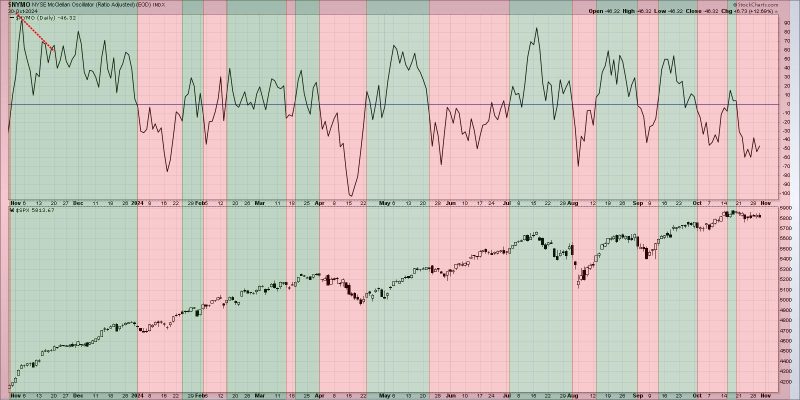Breadth Divergences: A Warning Sign for Investors?
Market analysts and traders often look for signals that can provide insight into the overall health of the market. One such signal that has been gaining attention recently is known as breadth divergences. This phenomenon occurs when the number of stocks participating in a market rally begins to dwindle, even as major market indexes continue to rise. The question on many investors’ minds now is whether these breadth divergences could be signaling the end of the ongoing bull market.
To understand the significance of breadth divergences, we must first grasp the concept of market breadth. Market breadth refers to the level of participation in a market move, and it is often measured by tracking the number of advancing stocks versus declining stocks. When a market rally is supported by widespread participation across a broad range of stocks, it is considered to have strong market breadth. On the other hand, when the rally is led by only a handful of stocks, it is said to have weak breadth.
In recent months, there have been increasing concerns about the narrowing market leadership seen in major stock indexes. While headline indices like the S&P 500 and the Nasdaq have continued to reach new highs, the number of individual stocks participating in the rally has been shrinking. This divergence between the performance of the major indexes and the underlying breadth of the market is what has many investors worried.
Historically, breadth divergences have often been seen as a warning sign of potential market weakness. When a small group of stocks is driving the market higher, it can be indicative of a lack of overall market participation and breadth. This scenario could make the market vulnerable to a sudden correction, as the rally becomes increasingly dependent on a few key players.
Furthermore, some market observers point to the potential risks of market concentration when only a few stocks are propping up the entire market. A sharp reversal in the fortunes of these key stocks could have a significant impact on the broader market, potentially leading to a widespread sell-off.
While breadth divergences do not necessarily guarantee an imminent market downturn, they do serve as a red flag for investors to closely monitor market dynamics. It may be prudent for investors to exercise caution and consider diversifying their portfolios to mitigate the risks associated with a potential market correction.
In conclusion, breadth divergences are a crucial factor to watch for those navigating the current market environment. By keeping a close eye on market breadth indicators and staying informed about the underlying dynamics of the market, investors can better position themselves to weather any potential storms that may lie ahead. As always, a disciplined and diversified approach to investing remains key in navigating the uncertainties of the market.
